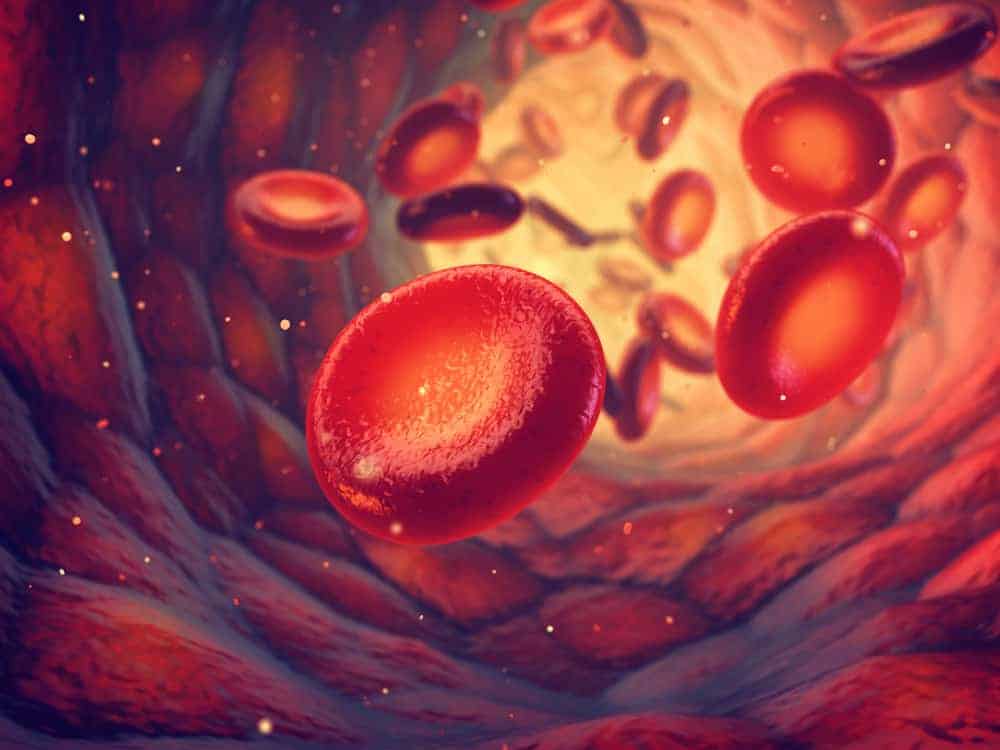Anemia is a tricky and simple condition all at the same time. On one hand, it’s tricky because many people suffering symptoms of anemia may not realize that there is an underlying issues. On the other hand, it’s simple because a simple blood test can determine whether or not you have anemia. However, the cause of anemia many not be so simple. Anemia is a condition in which you lack enough healthy red blood cells to carry adequate oxygen to your body’s tissues. Having anemia can make you feel tired and weak.
There are many forms of anemia, each with its own cause. Anemia can be temporary or long term, and it can range from mild to severe. See your doctor if you suspect that you have anemia because it can be a warning sign of serious illness. Anemia itself can be treated by taking supplements recommended by your doctor. But just make sure you’re getting a full review so that you know what caused the anemia in the first place. Let’s take a look at some of the possibilities.
Symptoms of Anemia

Anemia. Shutterstock.
It is mostly common knowledge that the most common symptoms of anemia can be weakness and fatigue. But that doesn’t mean those are the only signs you may be struggling with this condition. The symptoms can vary from mild to severe and include the following:
- Dizziness, lightheadness, or feeling like you are about to pass out
- Fast or unusual heartbeat
- Headache
- Pain, including in your bones, chest, belly, and joints
- Problems with growth, for children and teens
- Shortness of breath
- Skin that’s pale or yellow
- Cold hands and feet
- Tiredness or weakness
If you are experiencing one or more of these symptoms, it’s time to make an appointment with you healthcare provider.
Causes of Anemia

Red Blood Cells. Shutterstock.
While each case of anemia can vary from person to person, there are a few different possibilities for why it happens. However, do not take this as an end-all guide, because there can be up to 400 different causes for anemia. Here are a few common ones.
- Iron deficiency anemia – This most common type of anemia is caused by a shortage of iron in your body. This is an issue because it can impeded your ability to create hemoglobin. This comes from your bone marrow and without enough iron, the body cannot produce enough hemoglobin for the red blood cells. Pregnancy can be a major cause of this type of anemia. Blood loss, ulcers, over the counter medications, and cancer can also be factors.
- Vitamin deficiency anemia – This term is actually pretty straightforward. Your body needs more things than just iron to produce red blood cells. You also need a healthy balance of floats and vitamin B-12 in your diet to create those healthy red blood cells. But keep in mind: some people may consume enough B-12 but aren’t able to absorb the vitamin. This can lead to vitamin deficiency anemia, also known as “pernicious anemia”.
- Anemia of inflammation – Some disesases — such as cancer, HIV/AIDS, rheumatoid arthritis, kidney disease, Crohn’s disease and other acute or chronic inflammatory diseases — can interfere with the production of red blood cells.
- Aplastic anemia – This particular type of anemia is rare and life threatening. It happens when your body simply cannot produce enough red blood cells. Causes of aplastic anemia include infections, certain medicines, autoimmune diseases and exposure to toxic chemicals.
- Anemias associated with bone marrow disease – Leukemia and myelofibrosis are terrible enough on their own, however, these conditions can also cause anemia by affecting blood production in your bone marrow. The effects of these types of cancer and cancer-like disorders vary from mild to life-threatening.
- Hemolytic anemias – This group of anemias develops when red blood cells are destroyed faster than bone marrow can replace them. Certain blood diseases increase red blood cell destruction. You can inherit a hemolytic anemia, or you can develop it later in life.
- Sickle cell anemia – This type of anemia is inherited. It’s caused by a defective form of hemoglobin that forces red blood cells to assume an abnormal crescent (sickle) shape. These irregular blood cells die prematurely, resulting in a chronic shortage of red blood cells.
Risk Factors

People 65 years and older are at higher risk of developing some sort of anemia. Shutterstock.
We’ve gone over a few causes of anemia, but now it’s time to analyze who is the most at risk for developing this condition.
- Diets lacking Iron, B-12, and Folates.
- Intestinal disorders such as Crohn’s and others
- Menstruation and heavy blood loss associated with this
- Pregnancy
- Chronic conditions such as cancer, diabetes and more
- Family history of anemia or conditions that cause it
- Other factors such as infections, blood disease and autoimmune disorder
- Alcoholism
- Individuals over the age of 65
Prevention

Iron rich foods. Shutterstock.
Of course many causes of anemia may not be preventable. But anemic conditions such as iron deficiency anemia and vitamin deficiency anemias can be helped by paying attention to the consumption of these important vitamins and minerals:
- Iron. Iron-rich foods include beef and other meats, beans, lentils, iron-fortified cereals, dark green leafy vegetables, and dried fruit.
- Folate. This nutrient, and its synthetic form folic acid, can be found in fruits and fruit juices, dark green leafy vegetables, green peas, kidney beans, peanuts, and enriched grain products, such as bread, cereal, pasta and rice.
- Vitamin B-12. Foods rich in vitamin B-12 include meat, dairy products, and fortified cereal and soy products.
- Vitamin C. Foods rich in vitamin C include citrus fruits and juices, peppers, broccoli, tomatoes, melons and strawberries. These also help increase iron absorption.





